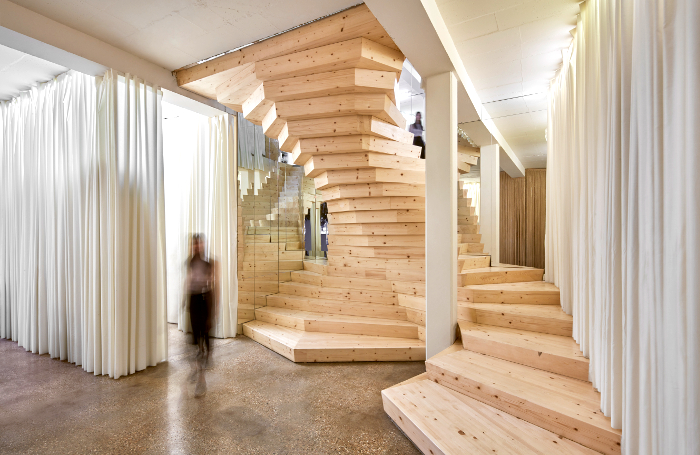The phrase ‘we’re all in this together’ is often met with scepticism in a business context. However, many practices recognize the value in fostering solidarity among staff and work hard to generate a sense of ownership – of both profit and risk – in their employees. One way of doing this is by ensuring everyone in the practice knows exactly where they stand when it comes to company finances.
"We speak about money to everyone internally," states Friedrich Ludewig, Director of ACME. "Letting them know how we are performing financially is a way of taking people along and communicating what we are doing."
Like many businesses, ACME publishes an annual report. But it also provides a detailed weekly presentation to all staff every Monday, revealing the progress of all current projects. Every project architect has to contribute a page on what has been done on a project in the previous week and what will be done in the week to come.
The Monday update’s most significant feature, however, is a crucial, unambiguous figure: the number of months’ solvency that the practice currently has.
This stark cashflow update requires a little explanation. Ludewig believes large figures are unhelpful when presented in isolation: it is hard for a staff member to appreciate whether business is going well or poorly. So the figure provided is calculated by dividing the company’s expenditure by the money in its bank account. Expenditure is averaged across a three-month period to account for the fact that VAT is paid every third month: were it calculated on a literal monthly basis every third month would look anomalously bad.
"It shows how many months’ breathing space we have were we to have no further income," Ludewig explains. "Ideally it should be three; sometimes we have achieved four."

To place this figure in context, an ‘outstanding invoice’ figure is also given, telling staff how many months’ worth of invoices are currently owed to the company. Both figures are accompanied by a helpful target figure, with the simple reminder that, for cashflow, ‘higher is better’ and, for outstanding invoices, ‘lower is better’.
"When this number drops, people can get a bit nervous, but being transparent about where we stand is important," Ludewig insists. "Architecture is a people industry. We are trying to make such information as digestible as possible so people can talk about it over coffee or at the pub. It is a powerful tool."
Conversely, if the number has been relatively high over a period of months, he believes that everyone has a legitimate right to raise the question of bonuses. At any time, staff have a picture of where the practice stands.
Interestingly, he adds that the aim is not to maximise this profitability gap, but to keep it reasonably small by paying out most of these surpluses as staff bonuses. Roughly half of the company’s profits become bonuses, the remainder going into the practice savings account.
The practice experimented with different bonus systems for the first couple of years before settling on something very similar to the John Lewis Partnership approach: everyone receives the same percentage of their salary as a bonus.
Facilitating discussion of practice profitability and bonus payments among staff allows them to better appreciate why the practice takes on certain projects but not others. The amount of staff time involved in a potential project, the anticipated timing of fee income and the need to take on work that is perhaps less exciting but a solid earner: all such considerations are rendered intelligible to employees.
All this is made accessible via a valiant commitment to graphs and colour-coded infographics. Ludewig clearly enjoys making data "look pretty", as he puts it. ACME regularly prepares circle graphs that give an instant snapshot of practice income, broken down by project, against outgoings.
These are never used to pressurise a project architect over profitability at project level. Everyone in the office knows which projects are making money and which are not, often by their nature.
Staff can also easily find out how the practice breaks down by gender, age, nationality, distribution of projects around the globe, and even the distances travelled by staff.
This is not amassing data for its own sake. It is part of Ludewig’s commitment to staff retention: another part is demonstrated by the fact that the practice is renting a new floor in its building to open a nursery for staff with young children.
"When you are trying to build a business you need staff to stay," he points out. "Growing a business requires taking on bigger projects; this means convincing larger clients to take a chance on you, for which you need the security of committed staff."
"If you are better at how you deal with money, with staff salaries and profits, then people will stay with you much longer."
Thanks to Friedrich Ludewig, Director, ACME.
Text by Neal Morris. This is a Professional Feature edited by the RIBA Practice team. Send us your feedback and ideas.
RIBA Core Curriculum Topic: Business, clients and services.
As part of the flexible RIBA CPD programme, Professional Features count as microlearning. See further information on the updated RIBA CPD Core Curriculum and on fulfilling your CPD requirements as an RIBA Chartered Member.
Posted on 29 August 2019.









